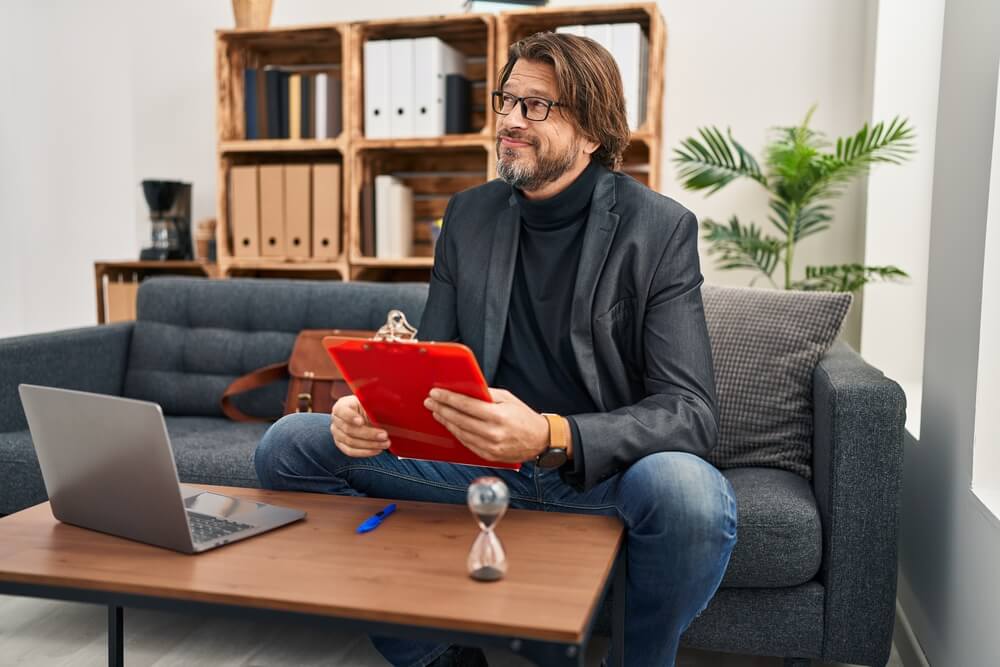Like many creative people, I have a learning disability. Specifically, I have dyslexia, which means I cannot make out the differences between and among the sounds of letters in the alphabet. As a result, spelling is nearly impossible and pronouncing words correctly is difficult at best. So, writing and reading aloud are near-disasters for me.
I’m hardly alone: According to Sally Shaywitz, an M.D. and co-director of the Yale Center for Dyslexia & Creativity, dyslexia is very common, affecting about 20 percent of the population and 80-to-90 percent of those with learning disabilities. People who have dyslexia struggle with reading, spelling, and learning a second language.
Going back to my own experience, I’d add that even everyday situations most people wouldn’t blink an eye at used to inspire outright anxiety in me, like filling out a form at a doctor’s office or being asked at a meeting to take notes on a white board. As a child, I found the prospect of having to speak up or read aloud in class terrifying.
For a long time, I was ashamed, and hid my dyslexia from everyone I knew. Even with a lot of tutoring, I barely passed and I was always quiet — the “silent type,” because I was afraid of sounding stupid.

But flash-forward to today, when people who know me would probably be surprised to hear these things about my past. In fact, in 2011, McGraw-Hill published One Simple Idea, my best-selling book, which has more than 500 five-star reviews on Amazon. I have 20 patents in my name. And, since 2013, I’ve written online about inventing for Entrepreneur, Inc. and Forbes and spoken multiple times internationally, as well as begun teaching my first college course.
The link between dyslexia and entrepreneurship. Yes, there is one.
How can this be? Actually, I achieved success as an independent inventor early on, in my 20s, in part because I genuinely believed no one would hire me.
What I didn’t know was that a strong link had been established between dyslexia and entrepreneurship. For example, Shark Tank television stars Daymond John, Barbara Corcoran and Kevin O’Leary have all opened up about their respective experiences with the disorder. In a recent post on LinkedIn, O’Leary described his condition as debilitating and revealed that as a child, he was falling behind in grade school until an educator convinced him that his dyslexia was in fact a superpower.
“Dyslexia doesn’t really retard learning; it just makes the incumbent tools in school useless to you,” O’Leary explained. “You have to learn how to deal with what dyslexia does. Once I had that solved, a very interesting acceleration occurred. You find in business today all kinds of founders of companies with a really bad case of dyslexia.”
To name a few: Richard Branson, Henry Ford and IKEA founder Ingvar Kamprad. Yes, each has been affected by dyslexia. So obviously, learning disabilities don’t necessarily hold people back. Even individuals with ADHD, scientific research has shown, may be able to think more creatively than the general population.
I have dyslexia, yet I overcame my fear. Here’s how you can too.
1. Don’t be afraid to ask for help.
Everyone needs help. The sooner you accept your weaknesses, the better. When I was an independent inventor, my wife Janice helped me write the letters I sent to potential licensees, as well as my marketing copy. My longtime employee James Shehan, whom I still work with, helped me fill out my provisional patent applications and file them with the United States Patent & Trademark Office.
When I needed to write down a telephone number I’d heard over the phone, Shehan would listen in so that I could get it right.
My business partner Andrew Krauss, meanwhile, has handled the day-to-day details for our coaching company inventRight, which celebrates its 20th anniversary this year. And to write the first edition of One Simple Idea, I hired a ghostwriter named Colleen Sell. My daughter Madeleine has been ghostwriting for me ever since.
2. Take great notes.
Note-taking is essential for me, because notes keep me on track, keep me organized and help me stay on top of projects every day. If I know what I’m supposed to do, I do it. Being able to record notes on my iPhone has been a lifesaver.
3. Make use of the latest tools and technologies.
My iPhone has also made writing much easier. I speak into my phone, and up pops a transcript. Magic! Ditto for Spellcheck.I still need help for writing. But modern technologies have facilitated my use of communications.
4. Find your passion.
Once I began speaking about inventing and licensing,I started worrying less about making a mistake. If you truly care about your audience and offer helpful information, people won’t care if you make a mistake — and neither will you.
Even though I know my material like the back of my hand, I still arrive at speaking events early to greet people and give them my full attention. I shake people’s hands, look them in the eye, give a warm smile. Suddenly, they’re not strangers anymore, and I’m less nervous. Practice and enthusiasm go a long way.
5. Don’t be afraid of failure.
You only fail if you quit. So, decide not to quit. This is simple, but true. Most things in life take longer than you expect. Be the last person standing. Say yes even when you’re not fully sure you know what you’re doing. Trust that you will figure it out.
6. Truly care about other people.
If you truly care about others, they will support you. I would be nowhere without the support of my community, which has rallied behind me and encouraged me to keep sharing my perspective.
My disability allowed me to find workarounds for obstacles in my everyday life. And that’s been a huge asset. Because perspective is everything. Today, I’m no longer hiding. I’m finally proud to be different. It’s only taken 50 years for that to be true! So, don’t hold off 50 years; don’t wait to find your own voice.
Source: Entrepreneur




